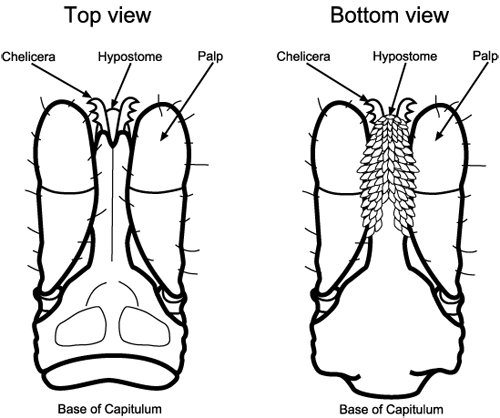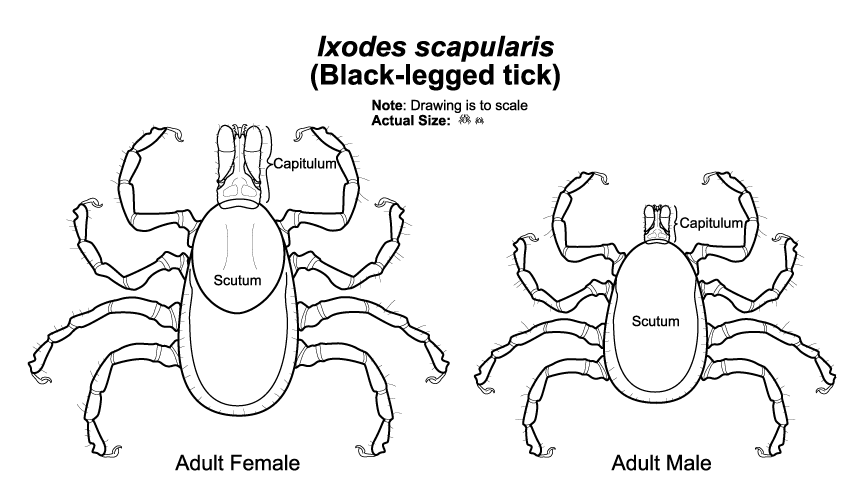Ixodes scapularis - Deer Tick
Adaptation
Deer Ticks have the ability to sense their environment. They have a chemoreceptor sensory apparatus called Haller's Organ. With this apparatus, ticks can sense odor, carbon dioxide of hosts, humidity of their climate, movement of nearby hosts and heat from their hosts.
Deer ticks also have adapted their mouthparts to fit their parasitic lifestyle. On the mouthparts they have sharp spikes or blades that point back toward themselves in order to stick into their host securely while feeding.
Deer Ticks use their four pairs of legs as their mode of transportation. They also use their upper legs (the pair of legs that are closest to the capitulum) to reach up, wait until a host comes by, grab on to the host and climb until they find a suitable place to feed.

